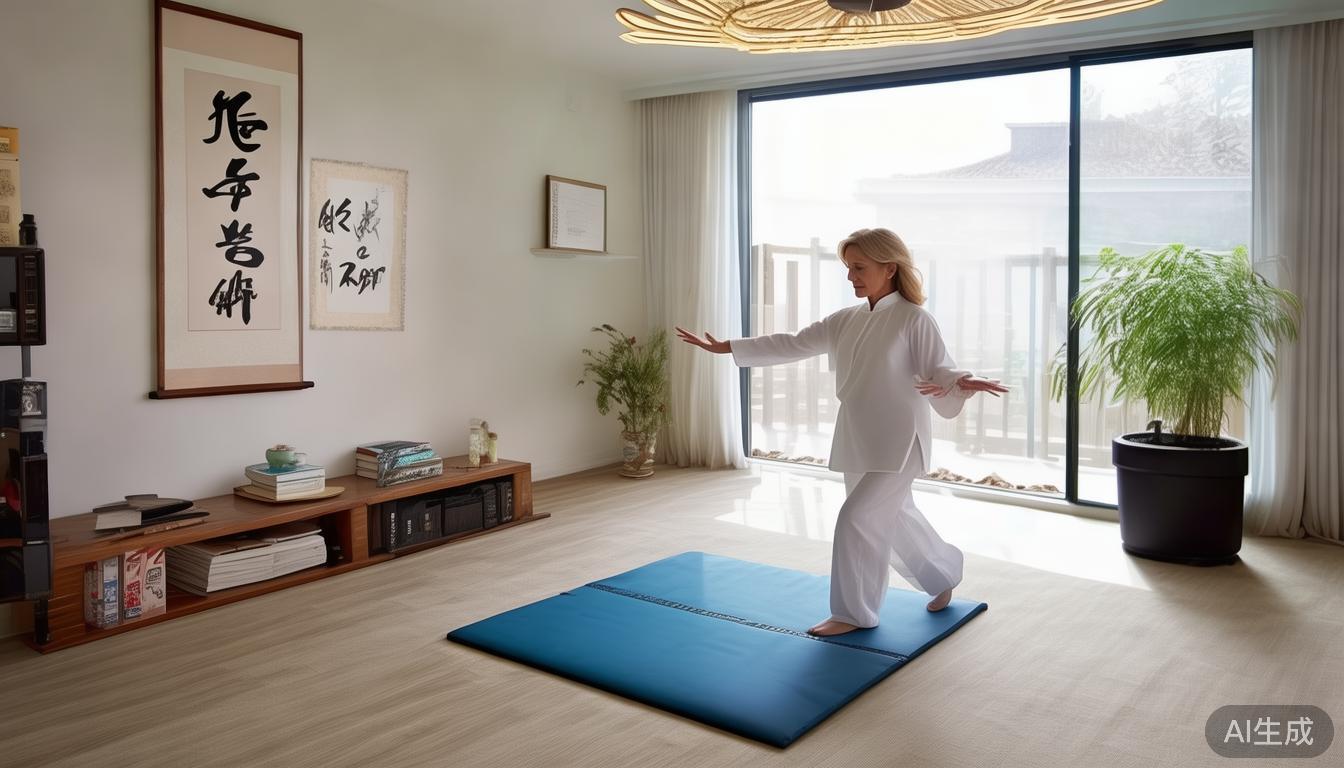After many years of observation, I found that Tai Chi exists in traditional Chinese health practices, and its application in the field of medicine is gradually getting attention from modern science. This kind of movement that presents a slow style and has a harmonious characteristic is amazing. It not only has the effect of improving body functions, but also has such a unique value for chronic disease management. It combines movement, breathing and consciousness through special combination modes, forming a complex, detailed, precise, and exquisite system with a complete concept of body and mind regulation.
How Tai Chi regulates the nervous system
When I was in a clinical position, I often gave ideas and suggestions for those patients suffering from anxiety to try practicing Tai Chi. Those patients would give feedback, that is, after practicing Kung Fu, I could feel significant relaxation, and the situation was like this. Such a type of movement can help recover by regulating the self-ninity and maintaining a balanced state, and exerting the coordination function of the sympathetic and parasympathetic nerves. Its behavior is a very practical and effective performance characteristic for improving sleep quality. Its behavior is a real and effective period .
The stability of the nervous system can be enhanced, which is the final result of continuous practice. Only in this way can the human body better cope with various changes in the environment. Many long-term practitioners say that when they encounter pressure in person, they can maintain a more peaceful overall mentality. Summarize this situation. The source of the situation is due to the positive and positive impact of Tai Chi on nerve functions.
What are the benefits of Tai Chi to the cardiovascular system

There is a kind of exercise that can help maintain stable blood pressure by a method that can strengthen blood vessel elasticity. This exercise is used to slowly perform deep-long posture breathing posture and perform similar stretching state movements in a way that cooperates to relieve the performance. When the process develops the self-motion in this way, there will be a situation where such situations do not exist and add additional burdens to the heart. I have specially made this happen earlier. The corresponding patient population group has a state where they have a situation of hypertension-related condition. Such behavioral characteristics are tracked to keep up with their actions. After they experience through experience and experience them through continuous and uninterrupted practice, a large proportion of the population of people of some sizes have appeared, so that they meet their status characteristics and requirements, and have improved situations. This situation is the complete content of this period.
Tai Chi has a unique feature, which is that it will not cause excessive load when exercising cardiopulmonary function. According to clinical data, only regular practice can reduce the resting heart rate indicator and effectively improve the efficiency of the heart, which is of great significance to prevent cardiovascular diseases.
How to improve metabolic function in Tai Chi
Exercise, it is continuous and gentle, is beneficial to promote energy metabolism and is beneficial to blood sugar regulation. I have directed many people with diabetes to practice. They say that the sugar levels in the blood become more stable after exercise. This exercise that can enhance the ability to use glucose through muscles and helps improve the sensitivity of insulin.
Tai Chi For Diabetes has mild properties, which is different from the blood sugar fluctuations that may be caused by intense exercise, so it is particularly suitable for people with metabolic disorders. Studies have shown that regular exercises can improve the basal metabolic rate, promote fat decomposition, and have positive significance for weight management.

How to integrate Tai Chi into health management
When I start practicing, it is recommended to understand my own physical health first and then choose the right routine. I usually recommend to students to start with simplifying the twenty-four ways. Persisting for twenty minutes a day can bring benefits. It is best to study under professional guidance to ensure that the movements are accurate and correct at this time.
Many students once told me that they arranged the Tai Chi practice period until early in the morning, or chose between work, and regarded Tai Chi as part of daily health care, so that it could complement other exercises, not only did their physical condition improve, but their daily life became more and more rhythmic.
In which aspect of physical improvement will make you feel the most pleasant surprise after practicing Tai Chi? What is it? Welcome to share your own experience. If you think this article is really helpful, please don’t be reluctant to like and forward it.


